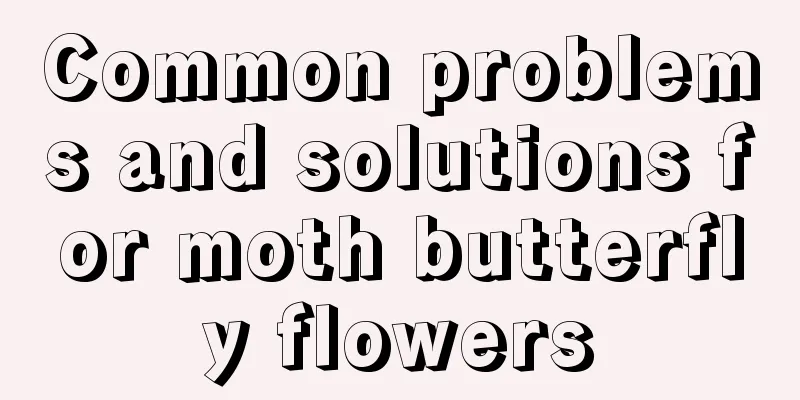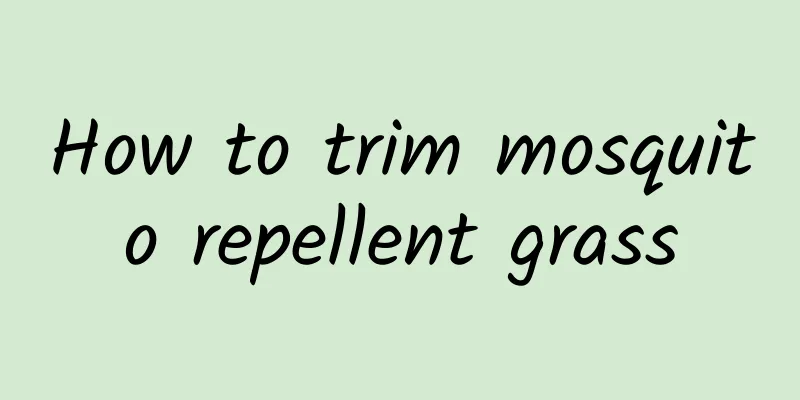Common problems and solutions for moth butterfly flowers

Winter management of the butterfly flowerWinter management is very important for plants. The main thing to pay attention to in the winter management of moth orchid is the temperature. The moth and butterfly flower is cold-resistant. Generally, the moth and butterfly flower can withstand temperatures as low as -3℃. When cultivating the moth and butterfly flower in winter, insulation measures are needed. The potted moth and butterfly flower can be placed in a warm room. If conditions permit, it can be placed in a greenhouse. This needs to be done before the temperature drops to 0℃. In winter, the temperature of the moth and butterfly flower should be kept above 0℃, and the temperature at night should not be too low. If it is too low, the moth and butterfly flower plant will grow slowly and bloom late. If the temperature in winter remains below -3℃ for a long time, frost damage is likely to occur, causing the leaves of the moth and butterfly flower to become deformed and the flower buds to become dull. Diseases and Pests of the Butterfly Flower and Their ControlThe main diseases that moth-butterfly is prone to are sclerotinia and gray mold. The fungus disease can infect the stems and leaves of the moth-flower, causing them to rot. In severe cases, the entire plant will die. Gray mold mainly infects the flower buds, which will reduce the ornamental value of the flowers. If symptoms are found on moth-and-butterfly flowers, the diseased plants need to be removed in time to prevent the disease from further spreading. In severe cases, pesticides need to be sprayed for treatment. The moth-shaped butterfly flower may be harmed by pests such as aphids and whiteflies. When pests are found, they should be treated in time. They can be treated by spraying anthelmintic phosphorus. Plant shape control of moth butterfly flowerControlling the growth of the moth and butterfly flower can make the moth and butterfly flower have a better ornamental effect. Generally, it is necessary to make the plant full and branched. The main ways to control the plant shape of the moth and butterfly flower are dwarfing and potting, and good ventilation must be maintained during maintenance. |
<<: What to do if Gloxinia does not bloom
>>: Common problems and solutions of alum root
Recommend
Is it bad to grow a lot of green radish at home?
1. Too much breeding at home is not good 1. Reaso...
How many years has it been since the old persimmon was planted down the mountain?
The results of planting old crow persimmon on the...
Causes and treatments of yellow leaves of royal clothing
1. Unsuitable soil Reason: It prefers slightly ac...
How to plant the walnut?
1. Soil environment The walnut loves sunlight ver...
Do I need to soak peanut seeds when planting them?
Peanuts are one of the four major oil crops in th...
Famous rapeseed flower viewing spots in China
China's famous rapeseed flower viewing spots ...
Succulents and money trees have root rot? Don't throw it away, just cut it
Succulent root rot Mild root rot Mild root rot me...
Flowering period of bougainvillea
1. When is its flowering period? Its flowering pe...
What to do if the leaves of Phoenix do not grow small buds
Phoenix is very drought-resistant, and it is co...
Top 10 Most Shade-Tolerant Outdoor Plants
The growth requirements of shade-tolerant plants ...
What kind of fertilizer is Huaduoduo No. 2 (the correct way to use Huaduoduo No. 2)
Huaduoduo No. 2 is a flower-promoting fertilizer....
「Case + Illustrations」4 detailed plans for vegetable garden transformation
Side Yard Vegetable Garden Practical side yard ve...
The best time to pick wild mugwort leaves
1. Why choose the best time to pick When harvesti...
Rose cultivation methods and precautions
Roses are very easy to grow. Their roots have a s...
When does nasturtium bloom?
When does nasturtium bloom? The flowering period ...









